3 Catholic Churches to Discover in the Nagasaki Region
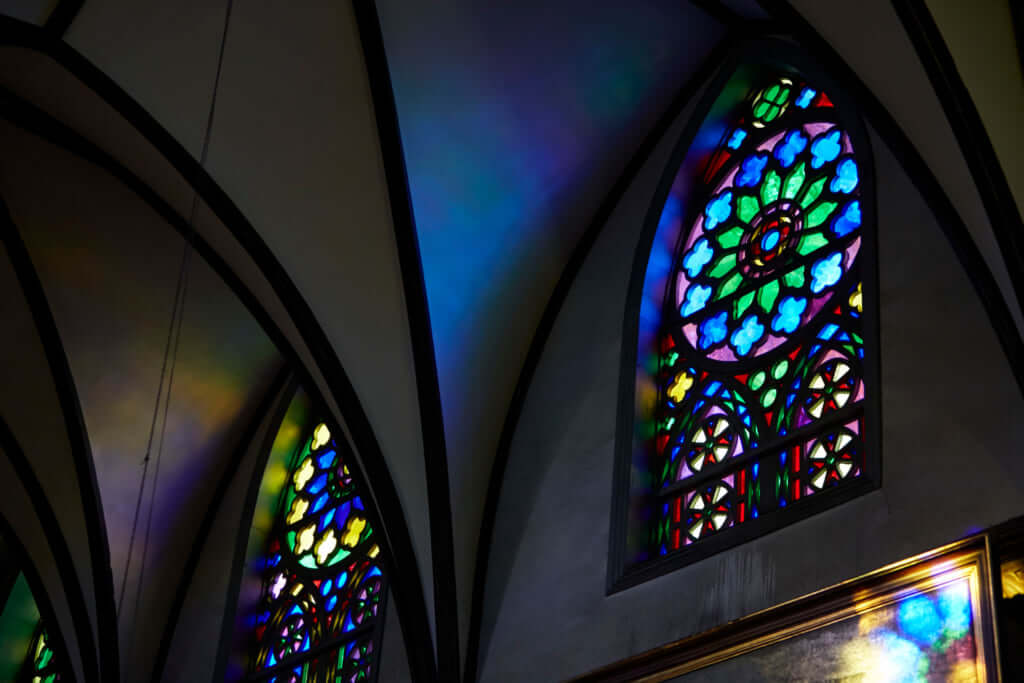
©JNTO
Known for its eclectic mix of architecture, the Nagasaki region in southern Japan is home to many architectural gems, each one more surprising than the last. Among these are three unusual Christian churches, all of which are testament to a past rich in history.
Located to the west on on the island of Kyushu, the port city of Nagasaki stretches over the peninsulas of the prefecture that bears the same name, as well as that of Nishisonogi. An atomic bomb was dropped on Nagasaki during the Second World War, after which the city had to be almost entirely rebuilt. This was when new temples and churches appeared, rebuilt on the ruins.
Today, Nagasaki is still considered as one of the most Catholic cities in Japan, and with good reason. Nagasaki was where Christianity established itself in Japan in the 16th century, under the influence of François Xavier, a Jesuit missionary who settled in Kagoshima (south of Nagasaki) in 1549, with the aim of evangelising the Japanese. In 1614, the Tokugawa shogunate (the dynasty of shoguns who ruled Japan from 1603 to 1867) decided to ban religion. This order forced believers – including Christians – to practise their faith out of sight, for fear of exposing them to the risk of torture or the death penalty.
However, thanks to the international opening of Japan during the Meiji era (1868-1912), religious freedom was reestablished in 1873. Christians, who until then had been forced to practise their religion in secret, were allowed to pray freely. This period therefore also saw the construction of many Catholic churches, all of which were very different. Among these were Oura Cathedral, Egami Church and Nokubi Church.
Oura Cathedral
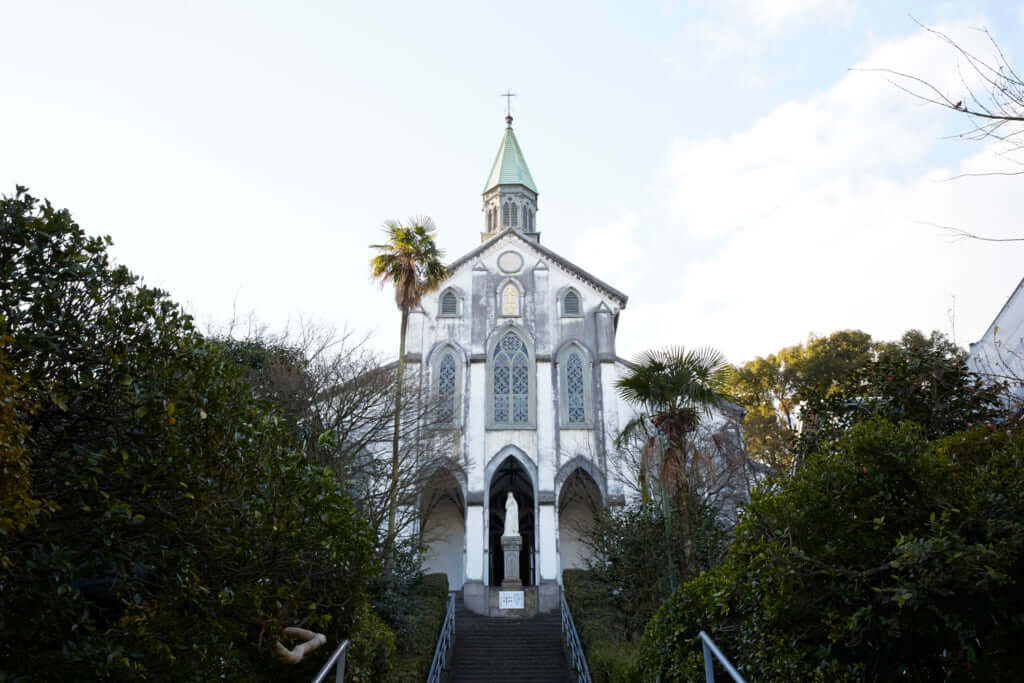
©JNTO
Certainly the best-known but also the most grandiose, Oura Cathedral – located in the heart of Nagasaki – is a Gothic Catholic church which was built in 1864 in homage to the 26 martyrs executed by feudal lord Toyotomi Hideyoshi in 1597. These Japanese Catholics were crucified on Nishizaka Hill, near Nagasaki, because of their religion.
Oura Cathedral was built on the initiative of the Paris Foreign Missions Society, which enlisted two priests to fulfil the task. Louis Theodore Furet was charged with the architecture of the building, while Bernard Thadee Petitjean took care of finding the exact site to be built on. Both had the shared goal of making Oura Cathedral an essential place to visit for both believers and tourists alike.
Surrounded by vegetation, the building has a cross on the top and the Chinese characters ‘tenshodo’, meaning ‘House of God’, above its central window. In an indication of its cultural importance, the church was named a ‘national treasure’ in 1933.
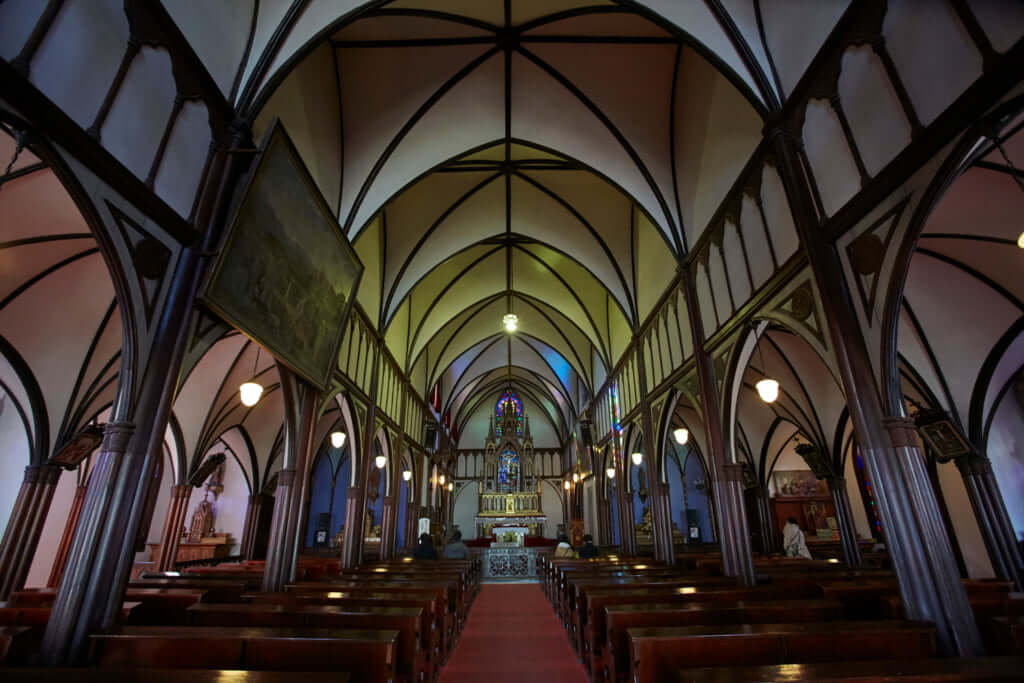
©JNTO
Egami Church
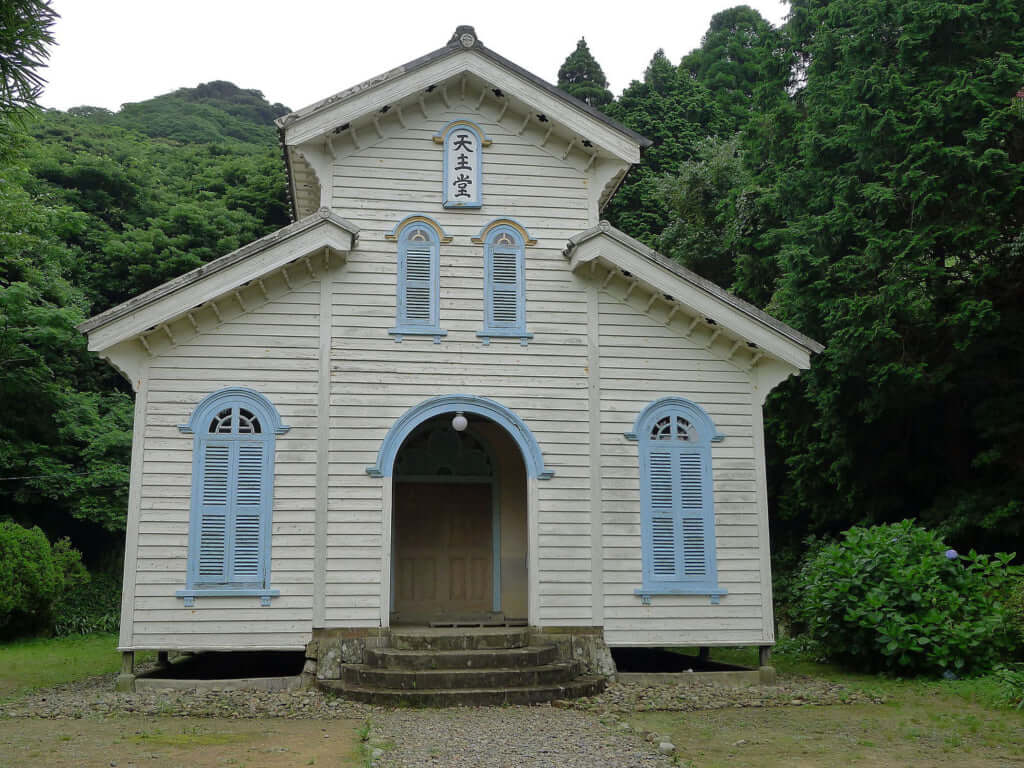
©Indiana jo, Wikipedia
Situated on the Goto Islands, near a village which now seems to be deserted, Egami Church overlooks the coast and offers an unobstructed view of the Naru-Seto Strait. Even the most daring tourists can only enter if a boat drops them off down the coast, because the church is very difficult to access.
Built and completed in 1917 under the direction of architect Tetsukawa Yosuke (1879-1976), this church made from immaculate white wood and with pastel blue shutters has turned out to be a fine example of joinery and carpentry in Japan. It was added to the UNESCO World Heritage list along with the Egami village in 2018. However, as tempting as it may look to enter, it’s only accessible after making an appointment at the tourist office on the Goto Islands.
Nokubi Church
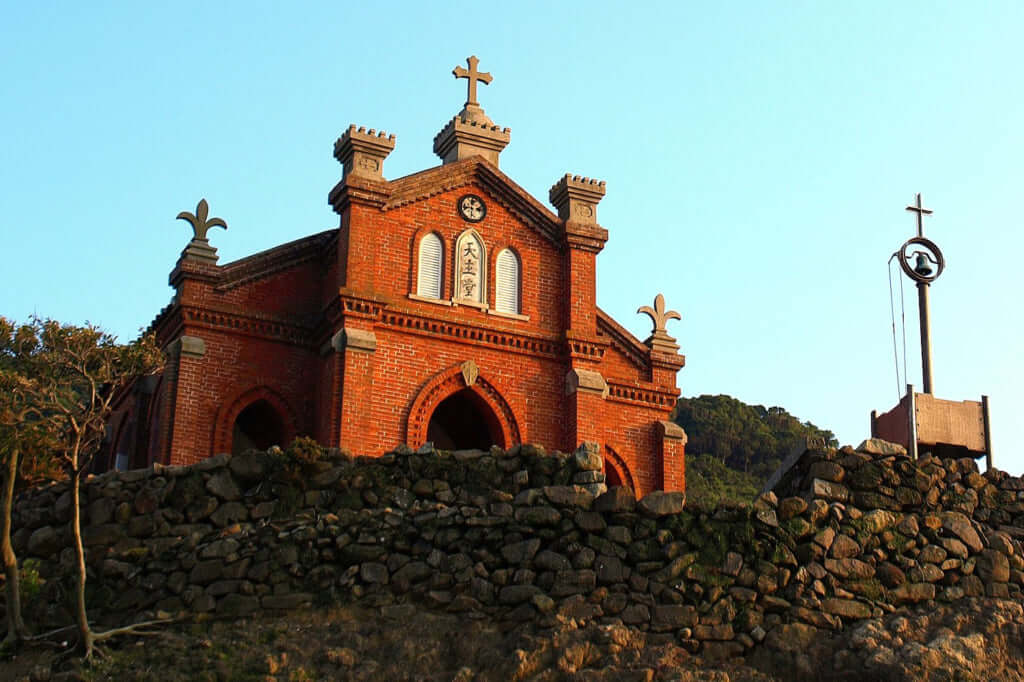
©ぱちょぴ, Wikipedia
Nokubi Church is located on the virtually deserted Nozaki Island, and is considered to be one of the most beautiful Japanese Catholic churches. This red-brick architectural masterpiece is also the work of Tetsukawa Yosuke.
Like Egami Church, Nokubi Church is situated on top of a hill which once overlooked one of the island’s three settlement areas. It is also closed to the public, but can be visited after scheduling an appointment at the tourist office on neighbouring Ojika Island!
TRENDING
-
Ishiuchi Miyako, A Singular Perspective on Women
Recipient of the 2024 Women in Motion Award, the photographer creates intimate portraits of women through the objects they left behind.

-
Recipe for Ichiraku Ramen from ‘Naruto’ by Danielle Baghernejad
Taken from the popular manga with the character of the same name who loves ramen, this dish is named after the hero's favourite restaurant.

-
Namio Harukawa, Master of Japanese SM Art
'Garden of Domina' offers a dive into the world of an icon of ‘oshiri’, whose work has now reached a global audience.

-
The Tattoos that Marked the Criminals of the Edo Period
Traditional tattoos were strong signifiers; murderers had head tattoos, while theft might result in an arm tattoo.

-
The Emperor of Japanese Porn is Now the Star of a Netflix Series
Deliciously funny, The Naked Director especially succeeds in reviving the atmosphere that was so characteristic of 1980s Japan.





